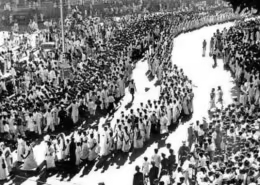Analysing the performance of the Indian agriculture sector since independence, considerable changes can be identified. This sector was for many years considered as a low producer and suffered from food crises in the 1960’s and the 1970’s, till the green revolution purpleged the rebirth of this sectoRead more
Analysing the performance of the Indian agriculture sector since independence, considerable changes can be identified. This sector was for many years considered as a low producer and suffered from food crises in the 1960’s and the 1970’s, till the green revolution purpleged the rebirth of this sector enhanced by high yielding varieties of seeds, chemical fertilizers and improved techniques of irrigation. This resulted in the overall enhancement of food grain production especially of wheat and rice, put India in a position of food grain sufficiency.
Particularly, these polices have been central tenets upon which the growth in agriculture has hinged on. Reforms of the 1950 obtained some measure of success in their goal of giving out land to the landless. Corporations such as the Agricultural Prices Commission and the Food Corporation of India guaranteed Minimum Support Prices (MSPs) for the key crops, helping define the price fundament and act as income necessities for producers.
However, during the past decades, attention has been paid on crop diversification; activities such as horticulture, dairy, poultry and fisheries. National Agricultural Policy (2000) and the subsequent ones considerably contributed positive trends to sustainable agriculture and the advancements in technology and infrastructure. In this regard, the Pradhan Mantri Fasal Bima Yojana (PMFBY) for crop insurance and the Pradhan Mantri Krishi Sinchai Yojana (PMKSY) to add strength to irrigation have extended backing to the agrarzial growth.
However, issues like small sized farms, infrastructures, and climatic fluctuations are still apparent requiring more policy directions and capital.
See less



According to the achievements, literary style, and influence of poets in India, the best poet is definitely Rabindranath Thakur. Kabiguru Rabindranath Thakur is regarded as the best poet India has ever seen. He is not only celebrated in India but has a name worldwide. Becoming the first non-EuropeanRead more
According to the achievements, literary style, and influence of poets in India, the best poet is definitely Rabindranath Thakur.
Kabiguru Rabindranath Thakur is regarded as the best poet India has ever seen. He is not only celebrated in India but has a name worldwide. Becoming the first non-European, the first Indian, and the only Indian to win the prestigious Nobel Prize in Literature, he soon became the epitome of education and artistry in the world of literature. His profound writing skills often illustrate his love for nature, feelings, romanticism, and deep human connection with the natural world. His writing covered every aspect of human behavior, symbolizing his immeasurable and brilliant writing quality and artistic vision. His writing best described the rural parts of Bengal and folk traditions which in one word is innocent yet very beautiful and romantic. His poetry was also established in world-class songs, adapting itself into a genre of classical music known as Rabindra-Sangeet. His work was also translated into multiple languages.
His artistic visions and writing influenced the world to a greater extent, establishing him as the greatest of all time and representing India internationally even to this day.
Today I am proud to say that I am from Tagore’s land.
See less